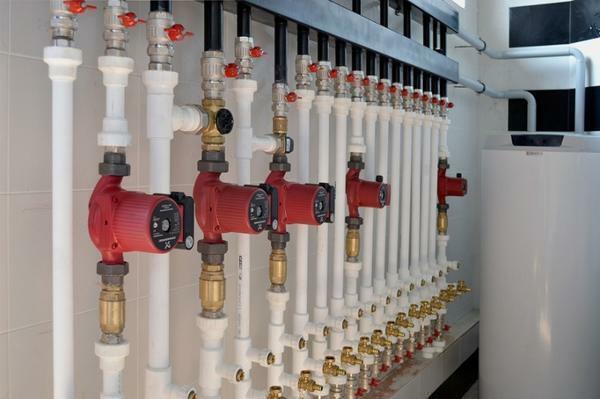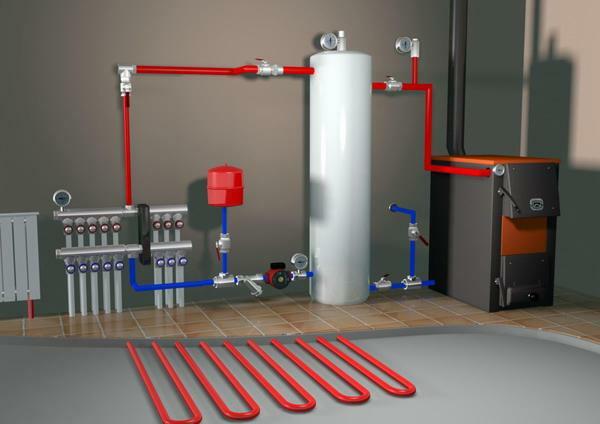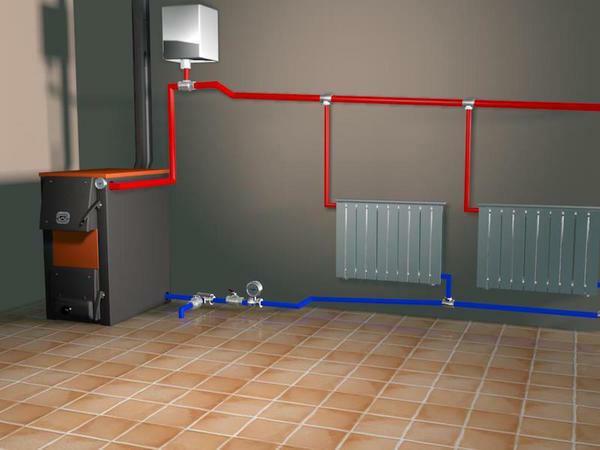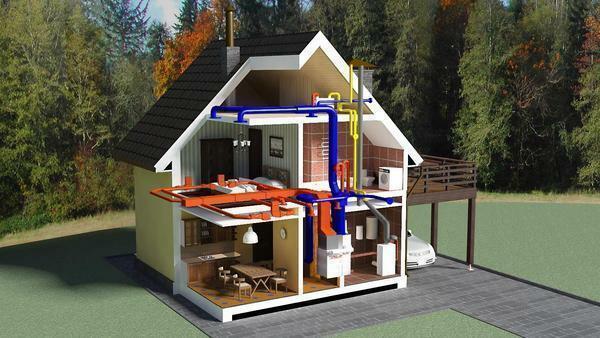 Thermal calculation is performed in the design of the heating system thermal load is defined to determine the right amount of heat for the home. The calculation formula helps to determine technical issues with the number and location of radiators. Take into account not only heated areas and consumption needs, but also other important data.
Thermal calculation is performed in the design of the heating system thermal load is defined to determine the right amount of heat for the home. The calculation formula helps to determine technical issues with the number and location of radiators. Take into account not only heated areas and consumption needs, but also other important data.
-
- distribution of the thermal load on the heating
- Fundamentals heat calculation
- heating heat capacity calculating characteristic heating
- correct formula heat calculation
- What is the thermal design( video)
distribution of the thermal load on the heating
building loads - the required amount of thermal energy in order to achieve a comfortable temperature in the house. In this case, the maximum amount of heat that is used under unfavorable conditions is taken into account. It is important to consider that for different buildings you need different amounts of energy.
Factors determining the required quantity of heat:
- thickness and material of manufacture of the walls. Take into account their thermal conductivity.
- Roof construction and material. The best option - insulated roof attic type.
- Ventilation. It should take into account its performance and possible loss of heat.
- Number and area of windows. But when using double-glazed windows heat loss is reduced.
- The intensity of the sunlight flow. It is important to determine the light side of the house or apartment.
- Ambient temperature. Take into account the difference between the indices indoors and out.
- Area of the heated room. With changes in the layout of the house, the heat obtained may not be enough.
In addition, you need to properly distribute the instruments in the room. Consider the area of rooms and the height of the ceilings. Also pay attention to the location of rooms: a through or corner. The interval to the heat source is also important.
With water heating, the maximum power rating of a single source is equal to the sum of the capacities of all pipes, radiators and batteries.
 thermal load of a building - the required amount of thermal energy in order to achieve a comfortable temperature in the house
thermal load of a building - the required amount of thermal energy in order to achieve a comfortable temperature in the house
Optimal temperature readings determined snip. Following them, in rooms in the depth of the building should be a temperature of 20 degrees. For corner rooms, the norm is 22 degrees. The kitchen is enough and 18 degrees. For a bathroom should be maintained at 25 degrees.
With air heating, the amount of incoming heat directly depends on the throughput characteristics of the air hose. Adjustment of heat input is due to manual monitoring of the ventilation grilles. The indicators can be monitored using a thermometer.
heat source in a coma can be a gas, electricity, air conditioning, heaters, oil radiators, underfloor heating. The temperature is adjusted in this case by means of a thermostat. Then the calculation is carried out with the maximum possibility of heat losses.
Basics of heating system heat calculation
Thermal calculation is a standard document. It includes several stages of computation. But first you need to understand the heating system and its characteristics.
Heating is a heat management system that includes several components. This is an important part of communication.
The heating system is the forced supply and removal of heat to the apartment. When calculating the calculation, it is important to calculate the heat loss most accurately. Among the tasks there are also determinations of the quantities of the coolant. In addition, it is important to choose the right elements of the heating system.
 The heating system is the forced supply and removal of heat to the room.
The heating system is the forced supply and removal of heat to the room.
The purpose of thermal calculation:
- Obtain data on heat losses, boiler output and pump;
- Determines the number and type of batteries;
- Have the characteristics of the pipeline hydraulics;
- Find out the volume and velocity of the coolant.
Thermal calculation - the necessary information, which should be based on practice. First, they collect the initial data about the apartment. Then calculate. Taking into account the received information, the elements of the heating system are purchased and distributed.
Characteristics of the calculation of the heating capacity of the heating system
Calculation of heat power - data that is collected at the design stage of the heating system. Further, they are used for the purchase and installation of equipment. This will help determine the number of minimum and maximum thermal loads per boiler.
Initial parameters required for creating thermal calculations:
- Type and area of the building. An important role is played by this apartment or a private house. Structural features of the building.
- .Here take into account the thickness of the walls, the number of window and doorways, the height of the rooms.
- State and Building Norms.
- Materials for the manufacture of architectural parts of the house.
- Use of rooms.
- Take into account and additional data. These include the duration of the heating season, the number of residents.
 Calculation of the heat output depends on several parameters
Calculation of the heat output depends on several parameters
When calculating, it is important to have information on all the above parameters. The correctness of the determination of the initial data allows us to create a more complete and accurate picture of the calculations. Often during the calculations, only a part of the parameters are taken into account. In this case, from 10% to 20% of the capacity of the equipment is added.
The correct formula for calculating the thermal energy
The calculation of thermal energy takes place according to several formulas. For self-calculation it is advisable to use a simplified version. The formula for the calculation of thermal energy: Qt( kWh) = V * ΔT * K / 860.
Decoding of the formula:
- Qt - necessary heat load for the room;
- V - the area of the house;
- ΔT - temperature difference between indices indoors and outdoors;
- К - heat losses at home;
- Divide by 860 to translate the value into kW.
To collect information for the formula, you will have to resort to additional calculations. So determine the coefficient of heat loss. It is affected by the type of structure and its thermal insulation. But you can simplify the task using certain fixed coefficients for different buildings.
 Calculation of thermal energy can be performed by several formulas
Calculation of thermal energy can be performed by several formulas
Houses made of wood with poor insulation and flat roof deserve a coefficient of 3 to 4. With laying in one brick and a small insulation - 2-2.9.With a double laying of brick and an average number of windows, the indicator is 1-1.9.For a well-insulated house use a factor of 0.6-0.9.
For temperature differences, the overall climate of the region is taken into account. This determines the comfortable temperature in the room. Optimal indicators can be taken in the building codes.
To more accurately calculate the index, resort to the calculation of heat losses. Here, all the features of the premises are taken into account: placement, insulation, enclosing elements. At the same time, the total area of the house is multiplied by the heat loss coefficient for windows, walls, floor, attic, ceiling height. For each indicator there are own coefficients, depending on the type of premises.
What is the thermal calculation for( video)
To calculate the optimum flow of heat, special formulas are used. The maximum need for heat is also taken into account. It is important to collect the necessary initial data, the definition of heat was accurate.


